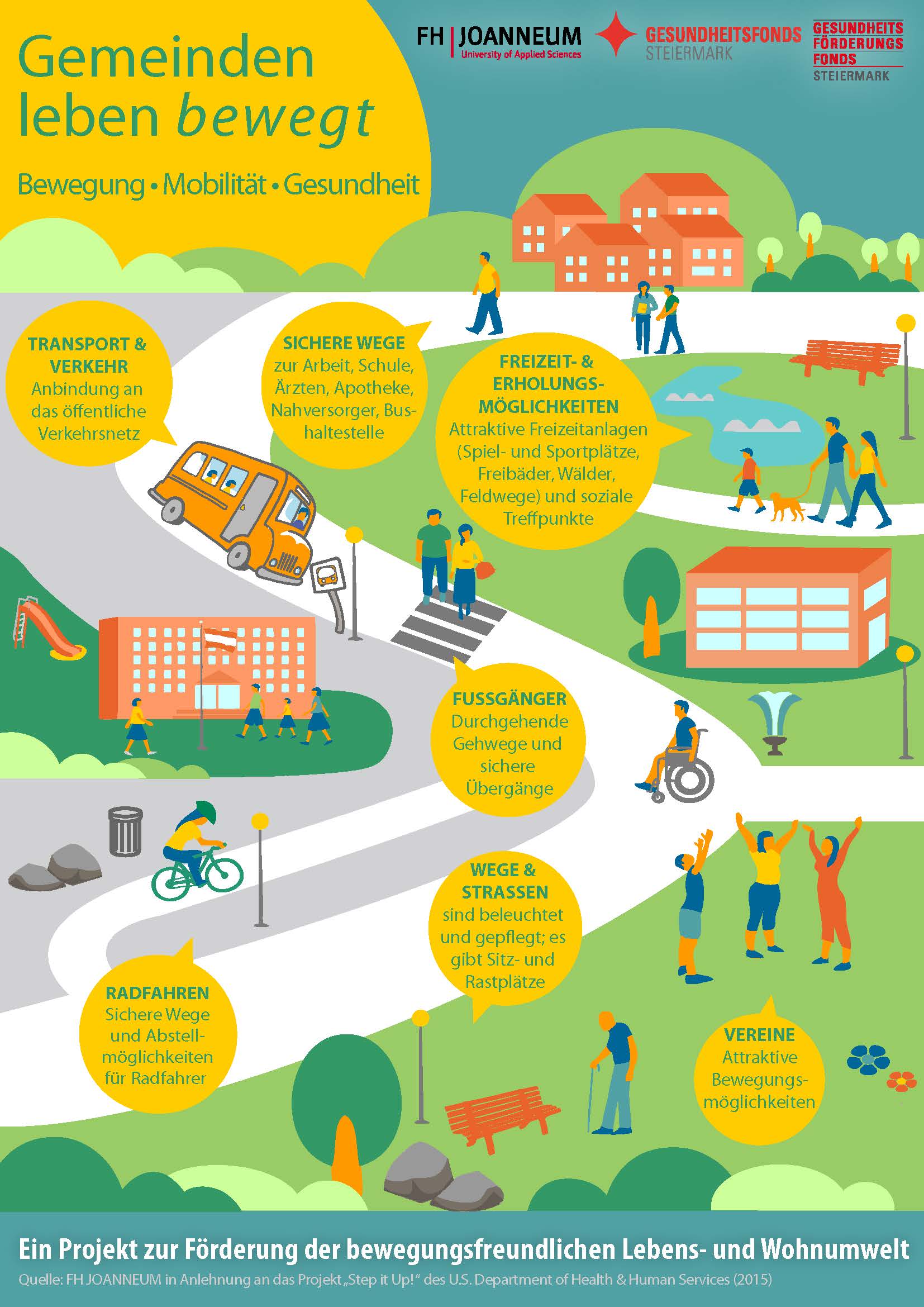The following activities are part of the project:
- Evidence-based project development
- Identification of three communities in the Federal State of Styria in Austria
- Set-up and strengthen cooperation with the communities and decision-makers
- Interdisciplinary development of analysing tools regarding the built environment in communities
- Interdisciplinary and participative analysis of the built environment in communities
- Participative development of innovative solutions for activity friendly communities
- Health-related support during the changes in the environment
The project is conducted by the Institute of Health Management in Tourism at FH JOANNEUM University of Applied Sciences and funded from Public Health Promotion Fund Styria. The project team consists of interdisciplinary team members from the fields of Health Management and Health Promotion, Social Work, Ergotherapy as well as Construction Design and Economics. The 2-year project runs from December 2015 to December 2017.
Triple Win:
Statistics show poor physical activity levels in all age groups in Austria (Gesundheitsfonds Steiermark, 2016; Statistik Austria, 2014). Therefore, Austrian health targets focus on reinforcing physical activity by “promoting healthy, safe exercise and activity in everyday life through appropriate environments” (Bundesministerium für Gesundheit, 2015).
The way public places and physical environments are shaped highly influences mobility and physical activity as well as the health status of citizens in rural communities (Bloomberg, 2010). In the WHO Paper “Promoting physical activity and active living in urban environments” and in the Toronto-Charta for physical activity (Siefken et al., 2010), the design of built environment is a key issue for physical activity. Research on physical activity and the built environment hardly takes place in urban areas (Dannenberg et al., 2011). This can be attributed to global urbanization, which means that a large proportion of people in Europe (about 80%) are living in urban places while the countryside becomes abandoned (Antrop, 2004). Approaches for changing the built environment in cities are mostly not appropriate for rural areas.
The Project “Active Living Communities” allows involvement and participation of all people living in three rural communities and gives them a voice for their needs and demands regarding walking and cycling as well as with using public places. Moreover, the project strengthens cooperation between citizens, key persons/organisations in the community and (political) decision-makers. As a third point, the modifications which are identified and implemented in the project motivate all groups of people to live more actively and to integrate physical activity in their daily living.


